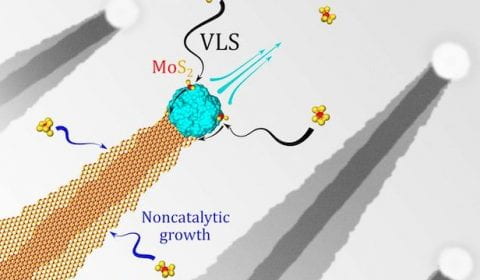Rice lab studies mechanism behind bilayer molybdenum disulfide ribbons
 It’s now possible to quickly make ultrathin nanoribbons of molybdenum disulfide, with a speedy nickel nanoparticle leading the way.Materials theorist Boris Yakobson and his team at Rice University’s George R. Brown School of Engineering collaborated with the Honda Research Institute and others to make tightly controlled bilayer nanoribbons of the material commonly known as MoS2, a step forward with potential applications in quantum computing.
It’s now possible to quickly make ultrathin nanoribbons of molybdenum disulfide, with a speedy nickel nanoparticle leading the way.Materials theorist Boris Yakobson and his team at Rice University’s George R. Brown School of Engineering collaborated with the Honda Research Institute and others to make tightly controlled bilayer nanoribbons of the material commonly known as MoS2, a step forward with potential applications in quantum computing.
Honda, with scientists at Rice, Columbia University and Oak Ridge National Laboratory, found that nanoparticles of nickel exposed to molybdenum oxide and sodium bromide powders and sulfur gas in a chemical vapor deposition furnace wrangle the resulting nanoribbons into shape, constraining their width to several micrometers. At the same time, the nickel catalyzes a thinner second layer of less than 30 nanometers, roughly equivalent to the width of the nanoparticle itself.
The study appears in Science Advances.
– See more at Rice News

